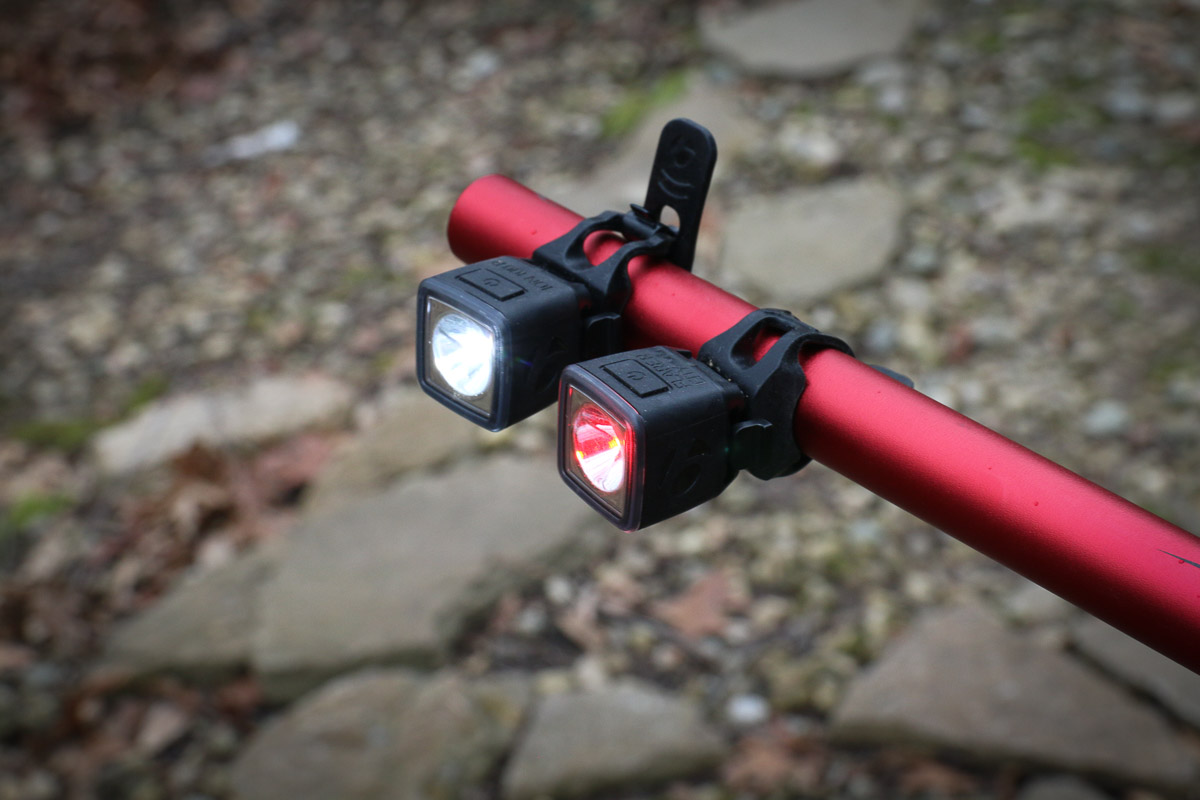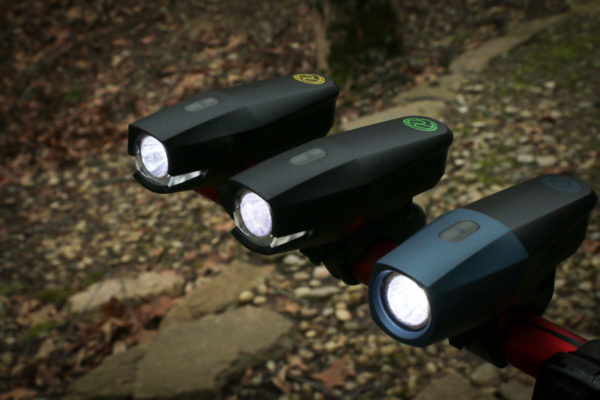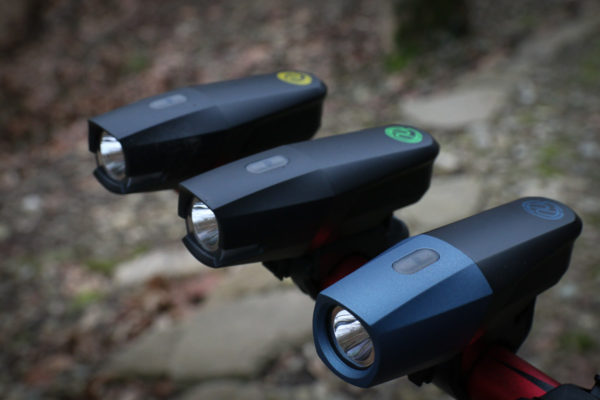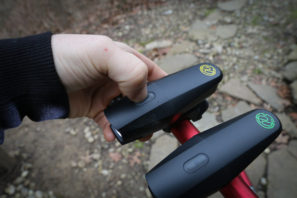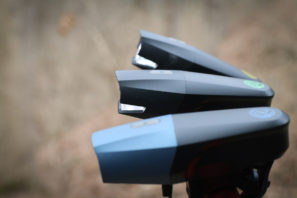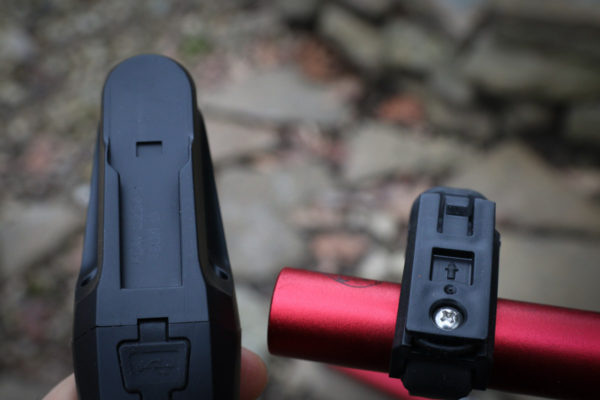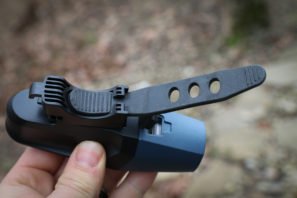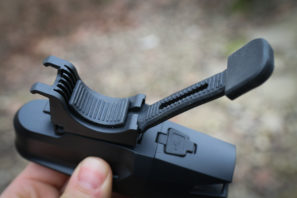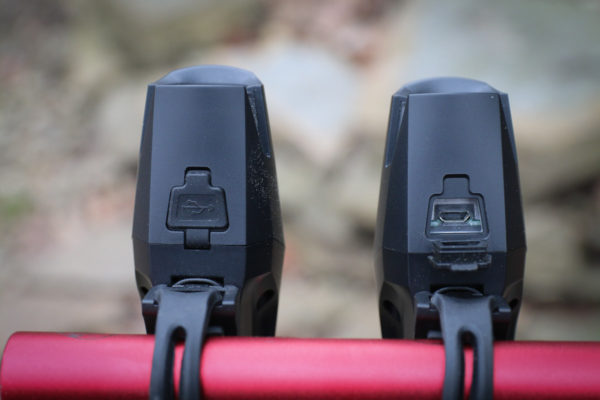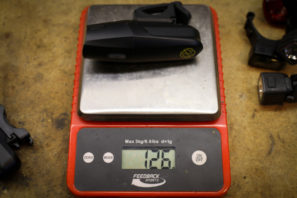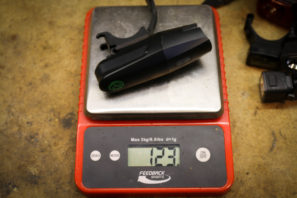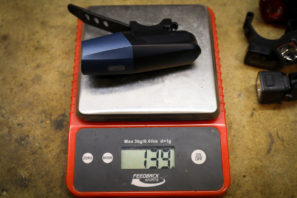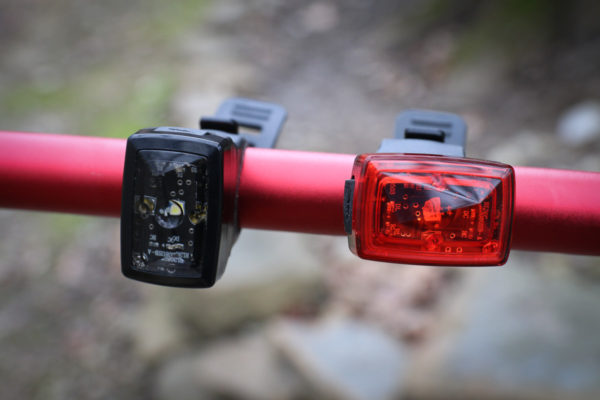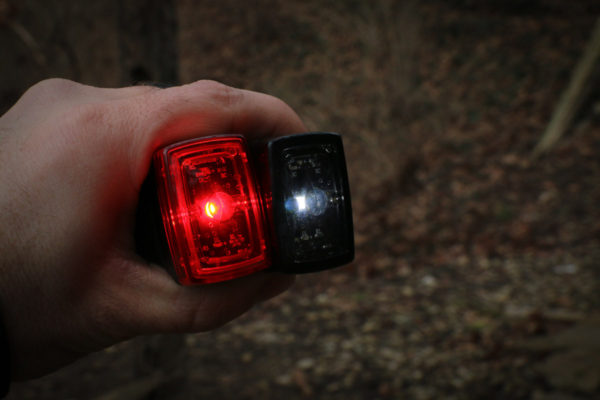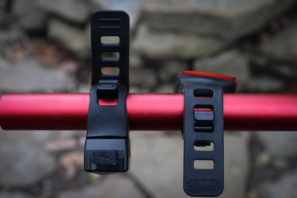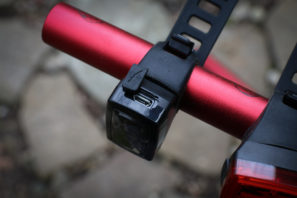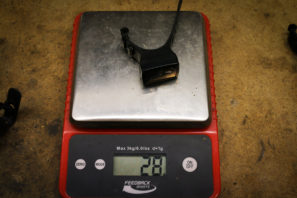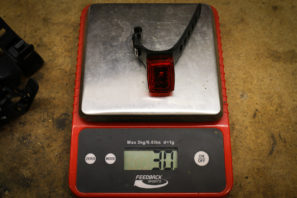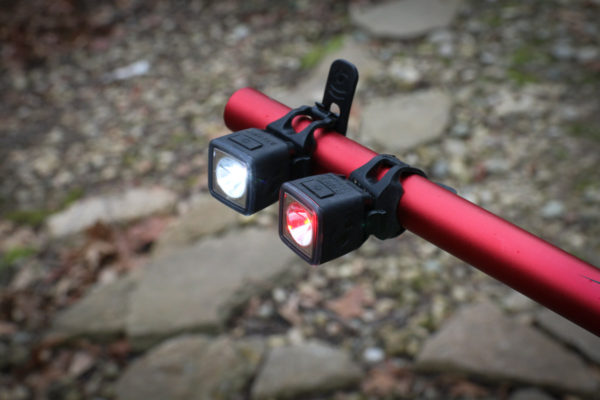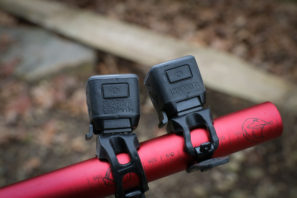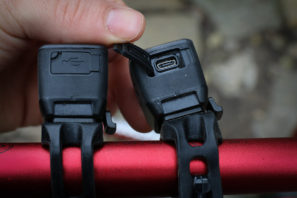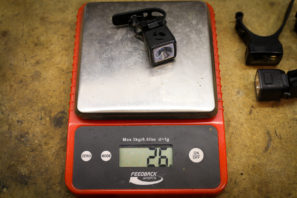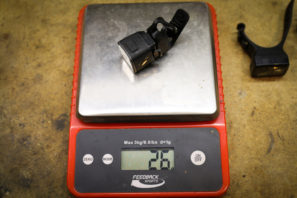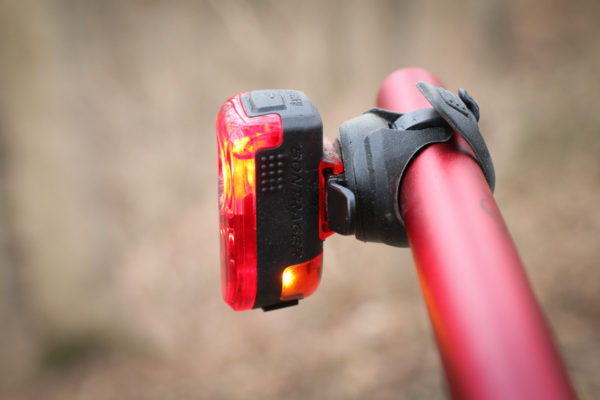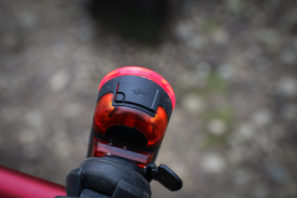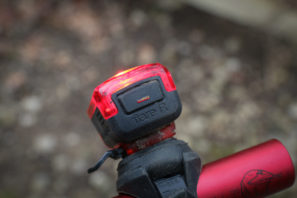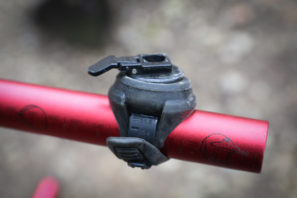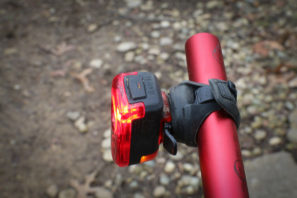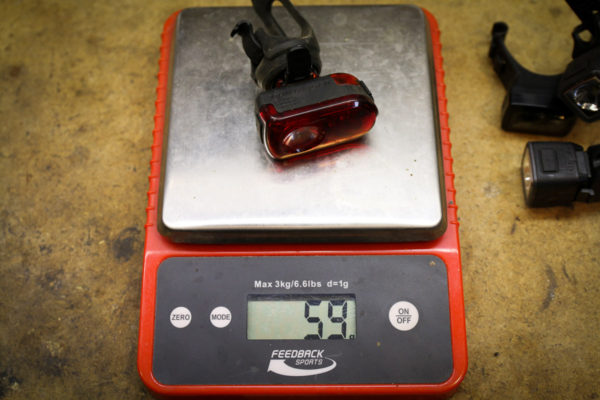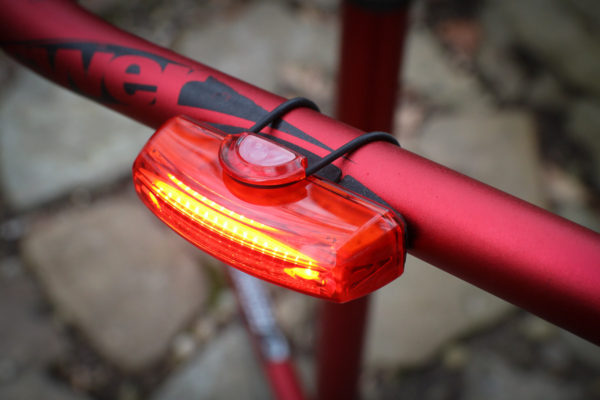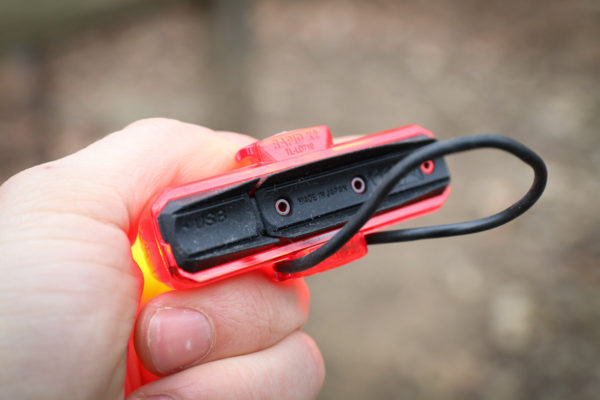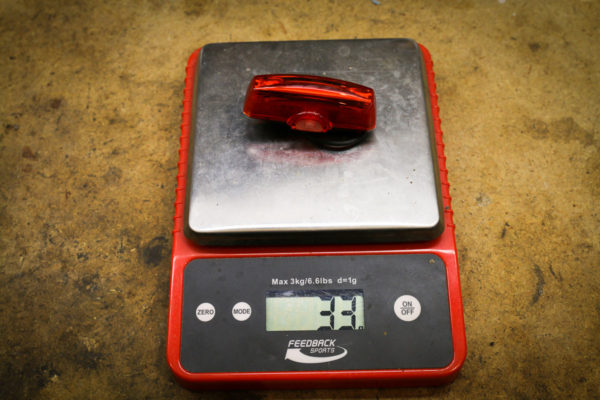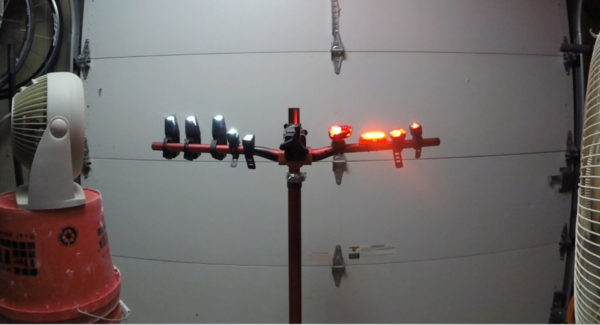If you’re not using a light every time you ride on the road – you should. I think I speak for a lot of riders when I say that in years past I didn’t give much thought to riding with lights during the day. Now though, after too many stories of near misses or worse, I can’t leave the house without one. The good news is that modern lights make you far more visible to other traffic, even during the day. They’ve also gotten a lot smaller while maintaining impressive battery life – and in this case, every one of these lights is rechargeable. No one wants to invest a small fortune in coin cell batteries.
This is by no means a definitive list, but it is simply a group of lights that were sent to us for testing. Split between front and rear lights, Bontrager, Cateye, and Portland Design Works prove that lights don’t have to be big to be mighty…
Portland Design Works City Rover 410, City Rover 610, & Lars Rover 810
Obviously, the PDW City Rover and Lars Rover are the biggest lights in the round up, but they’re also the most powerful. True to their names, the lights all have FL1 certified lumens at 410, 610, and 810 with 5 modes. Each light has a single button on the top that is also the LED indicator which provides a low battery warning which means you have 15 minutes of light left (after the light automatically steps down from high power). Built with CREE LEDs, a Texas Instruments integrated circuit board and a lithium ion battery, PDW stresses that they sourced the best internals for each light which is part of what sets them apart from the cheap lights you’ll find on Amazon.
A nice feature is that the light will wake up in the mode you left it in, and the power switch has a 1 second delay to prevent you from turning it off if you’re trying to change modes. New to the 410 and 610 is additional side illumination…
…and the Mission Control 2.0 Mount. It offers the same quick connect of the light to the mount, but the 2.0 mount uses a new strap which is easier to fit to the bar instead of the three position strap of the original on the 810. The Mission Control 2.0 Mount does make a big different in quickly installing it on a range of different sizes and stays put.
All three are micro USB rechargeable with the included cable and claim a 5.5 hour recharge time – though these never took that long to charge. All three have a very round light pattern with the lens projecting a visible three ring bulls eye.
Even though the housings are a little bulky, the lights are still fairly lightweight, with the heaviest being the 810 at 139g.
The PDW headlights have always been a solid choice for front illumination, and now they’re more powerful with more features. Easy to mount, relatively easy to operate, and quick to charge at less than 5.5 hours, the pricing is also reasonable at $49, $69, and $89 (410, 610, and 810).
PDW Asteroid Front and Rear
The City Rover and Lars Rover are solidly in the “to see with” light category. The Asteroids on the other hand are definitely “to be seen” lights. Built with a unique design that is very small, the Asteroids also have a unique take on the power button – there isn’t one. OK, technically there is but it is the lens of the light. Simply double tap the front of either light and it will turn on or off. A single tap changes through the three modes.
A single red or white LED sits in the center of a visible circuit board, and the Asteroid rear adds a bit of side illumination. Each light attaches with a simple UV proof rubber strap which is replaceable in case it breaks. Micro USB rechargeable with the included cord, these will go for up to 24 hours before you need to recharge.
The Asteroid pair wins the award for easiest to use – which is ironic because it took me a second to figure them out. It’s the double click of the lens that got me. But once you know to double click to turn off or on, the ability to just press on the lens makes them way easier to operate, even with thick gloves. They’re also quite light, almost as small as the Bontrager Ion 100 R/Flare R City, and pump out a lot of juice for $29 each.
Bontrager Ion 100 R & Flare R City
Bontrager has recently been a big advocate of daylight riding lights, but they seem to realize that riders that care so desperately about that “pro look” don’t want bulbous lights hanging off their bike. Their new Ion 100 R front and Flare R City rear are the smallest lights Bontrager offers and their also the smallest lights in this test. Likely as small as you can make a micro USB rechargeable light, the front still manages 100 lumens front/35 rear out the CREE LEDs. These two make the tiny batteries last even longer by integrating a light sensor that automatically controls the brightness – for the front that is only while in flash mode, as the steady settings don’t change (5, 50, and 100lm). The rear has two settings, flash and steady, that both change from day to night mode depending on the ambient light. The light sensor makes the light brighter when it detects more light so it’s still visible. The only downside then is that at night, you can’t put the light in its highest power (rear only).
Each light mounts to the bars, seat post, seat stays, etc. with a replaceable three position rubber strap with a plastic hook. The plastic light bases also include quick disconnects and can be rotated inside the rubber strap to choose where you want the power switch to be. A single power button on top turns the lights on and off and cycles through the modes. The micro USB recharging port is below and each light includes its own cable. Run time is claimed up to 20h for the rear and 16h for the front on the lowest settings.
No surprise that the smallest lights are also the lightest at 26g each.
These are the perfect lights for someone who doesn’t want lights. What do I mean by that? They’re so small that even if you don’t want to be carrying around the weight or clutter of lights on your handlebar or seatpost, you’ll hardly notice these two. Add in surprising performance from such small lights, and these are easy winners. Each light sells for $39 or you can buy the set for $69.
Bontrager Flare R
At almost double the lumens of the Flare R City, the Flare R comes in at 65 lumens on full power. It also adds in amber side illumination at the bottom of the light. Including four true modes, this light does not have the sensor so you can set it however you’d like. Where the Flare R City has a claimed visibility of 400m, this bad boy can be seen from a claimed 2km, day or night! Sold with a quick release bracket that is easily adjusted to fit many different seat post sizes, the light also can be rotated on the mount for perfect alignment.
A single button up top controls the unit and also includes an LED battery indicator – green or red. At 5% of power the light will shift into battery save mode, which in our test below kept it running the full duration. Modes include a 65LM flash, 35 LM flash, 25LM steady, and 5LM steady.
Nearly double the lumens, nearly double the weight at 59g.
Speaking to the rear lights on the test, the Flare R is my pick for the best overall. It combines a lot of light, a great mounting bracket, good battery life, and relative ease of use to make it a great option to be seen day or night at $59.
Cateye Rapid X2 Kinetic
The Cateye is one of the more interesting lights on test in that it supposedly has a “Kinetic Mode” which is their way of saying it should function as a brake light. Indeed, when it detects changes in speed, it does light up with a 2.5 second burst of retina searing lumens. However, the sensor isn’t sophisticated enough to really know when you’re braking. That means it will seemingly go off at random, or not when its actually supposed to. It works in the parking lot test in the clip below, but out on the road its far more unpredictable. It does work, just not all the time.
Then there’s the mount. The rubber band style mount is dead simple, but since it only includes two bands in the box (small and large), installation may be a struggle. I had to really stretch the largest band just to mount it on the small part of a handlebar (below). It was nearly impossible to mount it to a 31.6mm seat post, though the packaging claims it will fit up to 32mm. The amount that the band has to stretch just to fit a 27.2 post makes me think broken bands are in its future. It does have a nice rubber pad for aero seatposts though.
Those two details above are a bit of a bummer since the light itself is very nice. The good news if you don’t want the Kinetic function, you can get the exact same light in the Rapid X2 – though you still have to deal with the mount. The light has a single button on the side to turn it on and cycle through the constant, rapid, or flashing modes which make use of its 50 lumens. Battery life is claimed up to 30 hours on flashing and it survived our test below still flashing.
The lack of a more substantial mount keeps the weight to just 33g.
The Cateye (Rapid X2) would be my choice if you are looking for the most visible rear light from the most angles out of the group and are willing to deal with the rubber band mount. There’s just no competing with a strip of 16 LEDS housed in a completely translucent housing. The lens not only lights up like it’s on fire, but it also bathes the rider in a red glow increasing visibility. However, the Kinetic Mode is a bit of a miss for the Rapid X2 Kinetic, but it gets points for trying. It probably won’t be long until brake lights are more reliable. The Rapid X2 Kinetic sells for $59, though you can ditch the Kinetic mode for $49.
Testing
Without access to an integrating sphere to accurately test lumens, other than testing for the user experience, I performed a simple run time experiment. Each light was fully charged, then mounted to a handlebar and turned on to its highest steady power setting. Multiple fans were running to keep things cool, along with the ambient temperature being fairly cool as well. The lights were filmed with a GoPro – until the 64gb card ran out over night. In case you’re wondering, a 64gb card will hold about 7 hours and 15 minutes of 720p at 60 fps footage. At that point though, only one light remained somewhat steady – surprisingly it was the Bontrager Flare R City. However, that’s not a totally fair assessment since the light has a built in light sensor that automatically controls the brightness and it seemed to be thrown off by the other lights. Just two minutes in to the test, the Flare R City started altering its output – steady low, then steady high. Still, for such a small light, it has impressive brightness and more battery stamina than its size would suggest.
The Flare R City aside, the rest of the lights performed mostly as expected. The Bontrager Ion 100R switched to flashing one hour an 16 minutes in. Then just over an hour and 39 minutes in, the PDW 810 dropped in brightness, followed by the 610 and 410 four minutes later. Then, three hours and 14 minutes in the PDW 810 shut off completely. At three hours and 46 minues the Bontrager Flare R switched to flashing, then minutes later the PDW 410 and 610 both went out. Four hours and 39 minutes in the PDW Asteroid switched to flashing, then died completely at five hours and 29 minutes. Just over six hours in the Cateye switched to blinking, followed by the Ion 100 R dying at six hours and 22 minutes. Three minutes later the Asteroid Rear turned to flashing, and died another 30 minutes later. At the end of the filming, the Cateye and Flare R were still flashing, and the Flare R City was still doing its pulsing thing.
The takeaway seems to be that at this point, all the manufacturers involved have pretty realistic run times listed for their lights. On top of that, with the technology built into the lights to keep them from dying on you without warning, you’d have to completely ignore the warning signs before they’ll quit on you completely. Also, even though the Bontrager lights lasted longer than those from Portland Design Works overall, the PDW lights stayed on high power longer.
- PDW Lars 810 – 1:39 flashing, 3:14 dead
- PDW City Rover 610 – 1:43 flashing, 3:53 dead
- PDW City Rover 410 – 1:43 flashing, 3:47 dead
- PDW Asteroid Front – 4:39 flashing, 5:29 dead
- PDW Asteroid Rear – 6:25 flashing, 5:54 dead
- Bontrager Ion 100 R – 1:16 flashing, 6:22 dead
- Bontrager Flare R City – 0:02 started switching from day to night mode, lasted entire test at 7:15
- Bontrager Flare R – 3:46 flashing, finished test still flashing at 7:15
- Cateye Rapid X2 Kinetic – 6:07 flashing, finished test still flashing at 7:15
